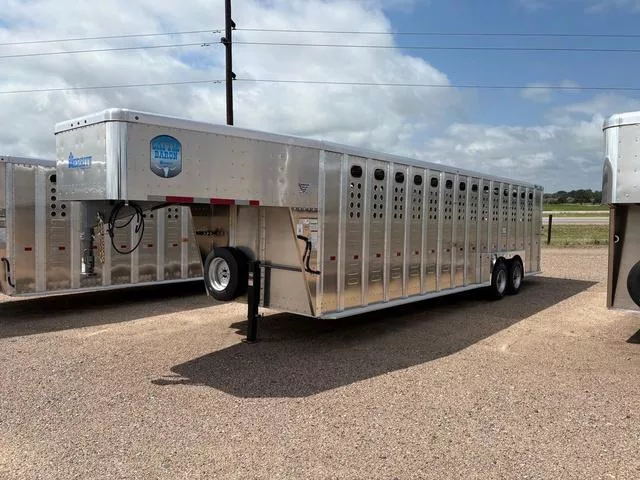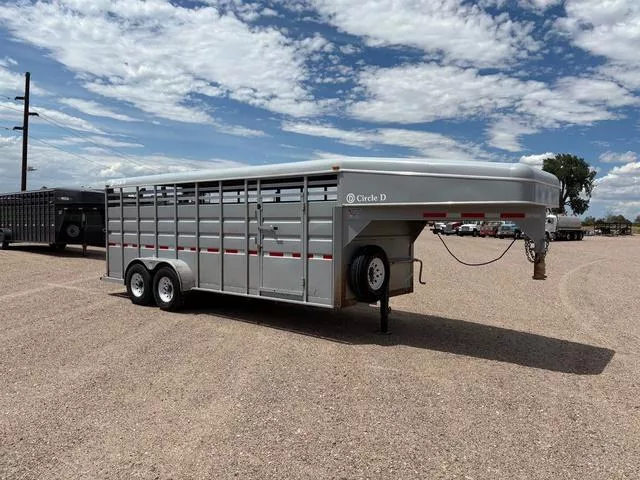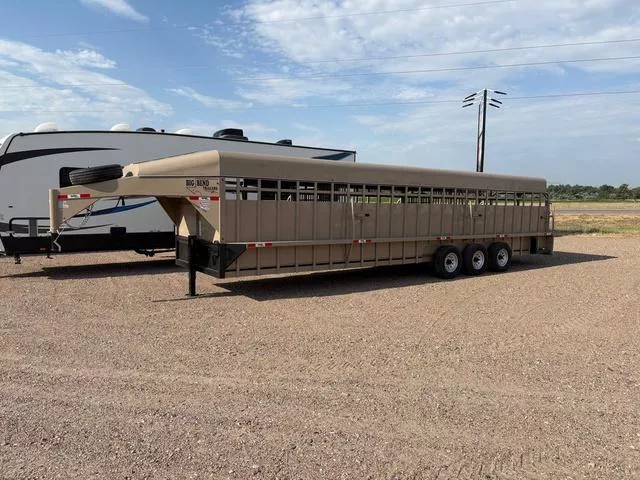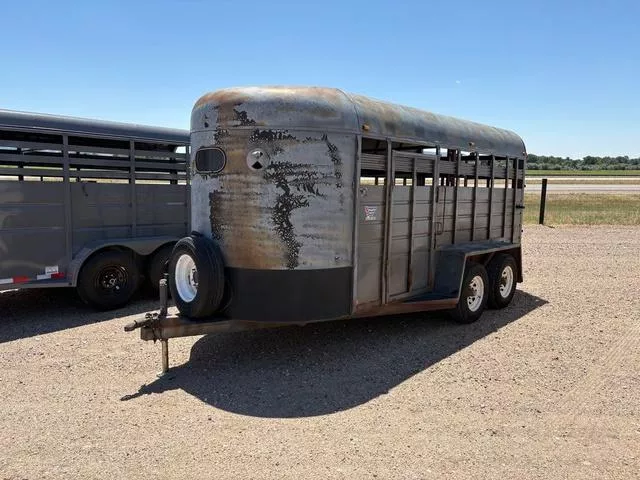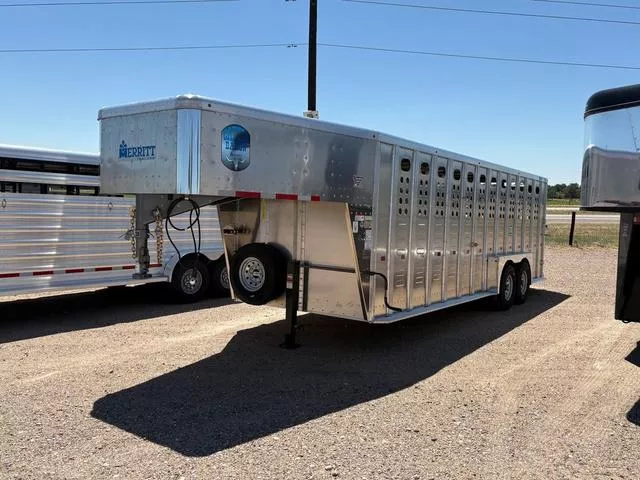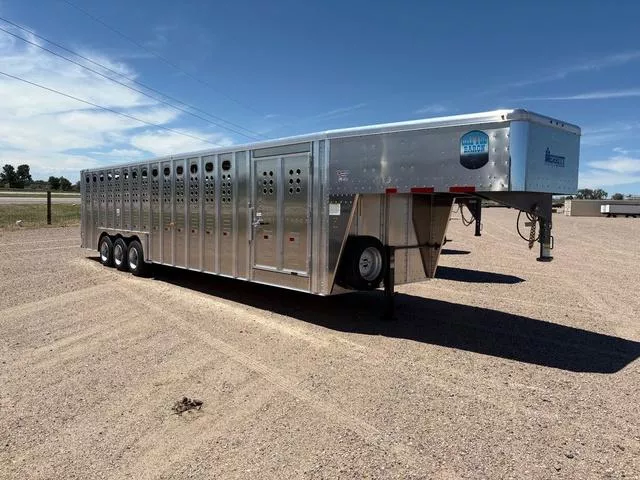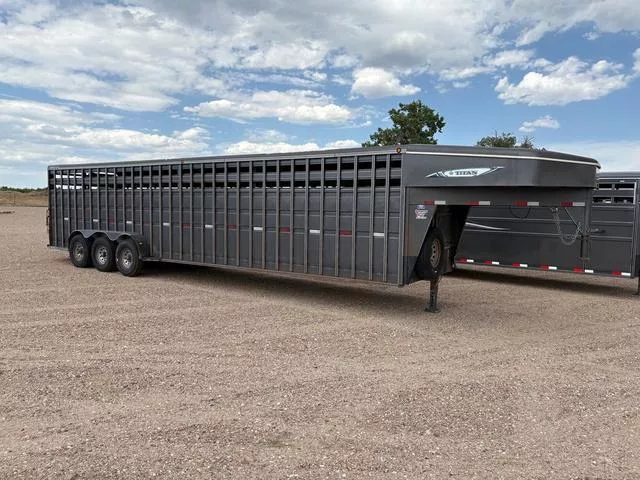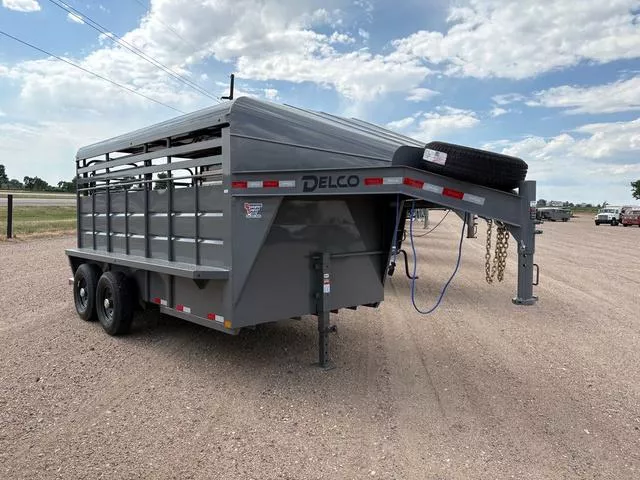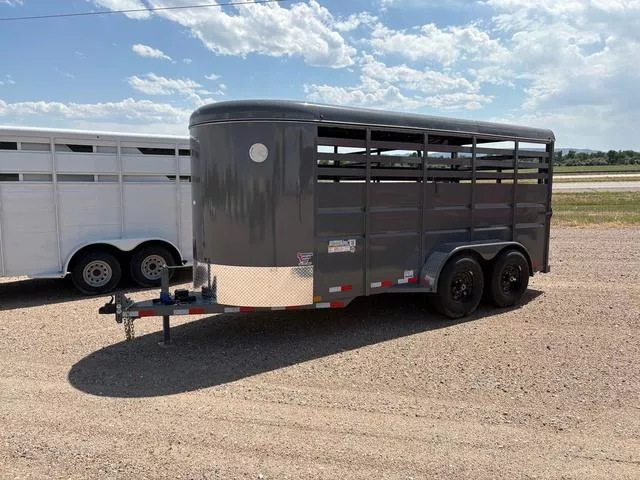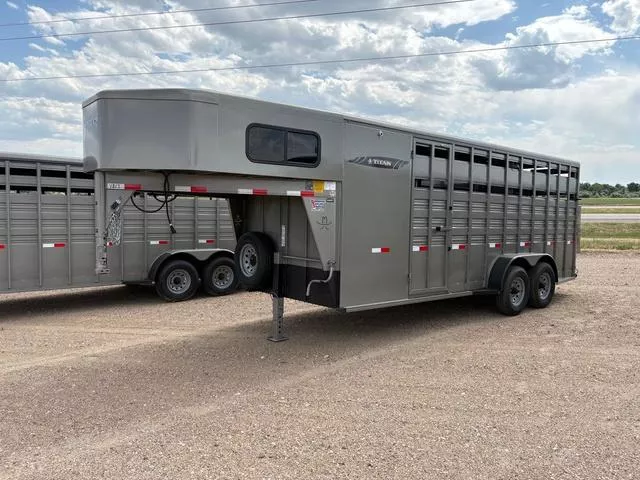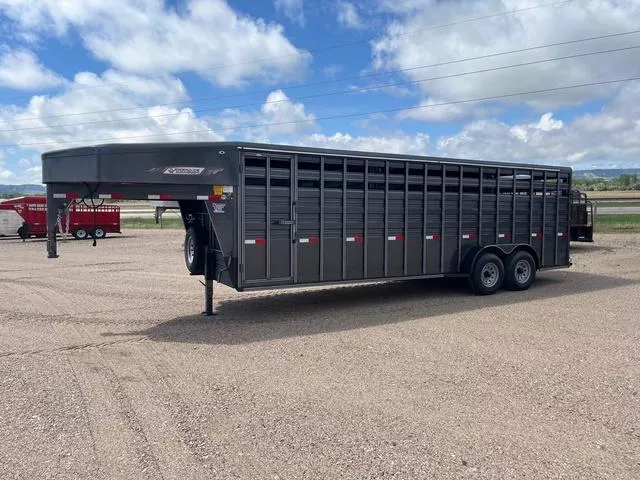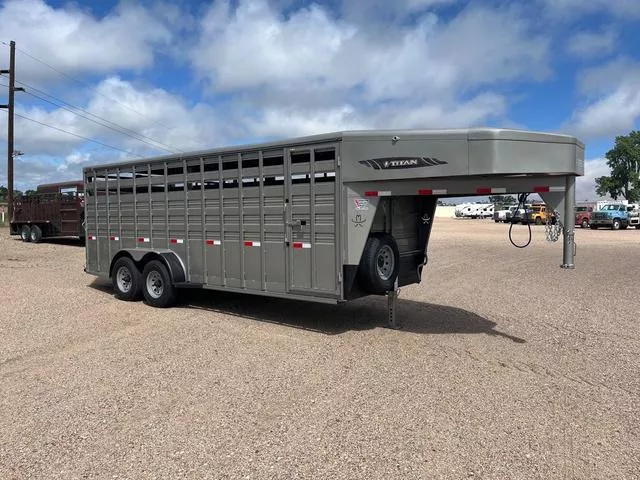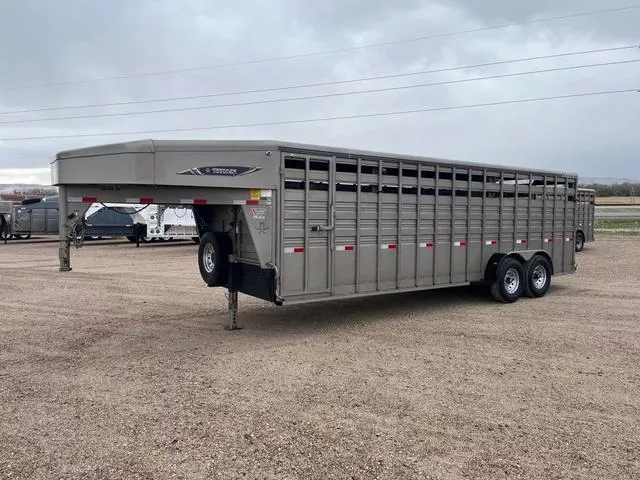TrailerTrader.com has a huge selection of Stock / Stock Combo Trailers for Sale near you. With over 150,000 trailers for sale, you are likely to find the trailer you need.
Livestock & Stock Combo Trailer Buyers Guide
Livestock trailers and stock (or stock combo) trailers, sometimes referred to as cattle trailers, are built to transport your livestock safely and efficiently. As with many different types of trailers, livestock trailers can vary immensely in size and scope, which lets buyers find the perfect trailer for what they need for their specific animal or animals.
Powered by Froala Editor
Types of Livestock Trailers
Livestock trailers are available for animals (and entire herds) of just about any size. The right type of livestock trailer for you will depend, obviously, on your particular livestock, as well as your towing vehicle.
- Bumper-pull livestock trailers are easy to hitch and tow and built in sizes to accommodate small herds.
- Double-deck trailers are typically used in commercial operations that need to transport a lot of livestock at once and take advantage of an upper and lower deck for increased capacity.
- Gooseneck livestock trailers connect to your towing vehicle with a gooseneck hitch and have a stronger towing capacity than bumper-pull trailers and can thus accommodate larger herds.
- Horse trailers are specifically built for horses, but many types of horse trailers can be adapted to safely transport other livestock. Horse trailers often come with full living quarters so you can sleep in the trailer or use it as a comfortable place to rest while at events.
- Stock trailers have open sides, which is great for visibility and airflow, and can be customized to transport different kinds of livestock.
- Stock combo trailers are designed to meet the diverse needs of transporting livestock, horses, and equipment. They blend the functionality of a livestock trailer with the convenience of a horse trailer, making them ideal for tasks such as moving cattle to market, horses to competitions, or equipment to job sites.
Livestock Trailers vs. Horse Trailers
As noted above, horse trailers are an option sometimes used to transport other livestock. The main difference in the construction of a livestock trailer as opposed to a specifically designed horse trailer is the partially or fully slatted sides of the livestock trailer, which makes loading and unloading a hefty number of cattle or sheep or pigs or any animal simpler and ideal for long or short trips.
Livestock Trailer Common Sizes and Capacities
Livestock trailers vary in size depending on the type of trailer, the needs of the hauler and more. Here are some of the most common sizes and capacities:
- Length and width and height: Small stock trailers and bumper-pull trailers most often measure between 7 and 7.5 feet tall, 16 feet long and 7-8 feet wide. Gooseneck trailers are often a little taller, still around 7-8 feet wide and often reach 45 feet or more in length. Double-deck trailers are unsurprisingly the tallest of the bunch and often reach 8.5 feet wide and 45 feet or more long.
- Gross Vehicle Weight Rating (GVWR): A small livestock trailer will usually have a GVWR up to 7,000-8,000 pounds. Large livestock trailers can have a GVWR of up to 24,000 pounds.
- Payload capacity: Subtract the weight of the trailer from the GVWR and get the payload capacity, which puts the payload capacity of small livestock trailers around 4,300 pounds and large livestock trailers close to 11,500 pounds.
- Tongue weight: The recommended tongue weight (downward force exerted on the hitch ball by the trailer’s tongue or coupler) for livestock trailers is 10-15% of the trailer’s total weight, including the load.
Towing and Hitch Needs for Livestock Trailers
The right towing vehicle and the right hitch are essential to a safe, smooth hauling experience of any livestock trailer.
- Hitch type: Some small stock trailers and bumper-pull trailers use ball hitches, but depending on the size and payload capacity, a livestock trailer may need a gooseneck or fifth-wheel hitch.
- Hitch class and rating: Hitch classes range from Class I to Class V and most bumper-pull livestock trailers require at least a Class III hitch but might require up to a Class V hitch. Gooseneck trailers require gooseneck hitches and some large livestock trailers may need a fifth-wheel hitch.
- Towing vehicle capacity: Check our Tow Guide which contains a tool to estimate your towing capacity. You can also check your owner’s manual to find your towing vehicle’s gross combined weight rating (GCWR) and make sure you can safely tow your loaded trailer.
- Braking systems: Livestock trailers towed behind your vehicle will have electric, hydraulic or surge brakes to assist with control and stopping while towing heavy loads. Tail lights, turn signals and reflectors are often required by law.
Livestock Trailer Pricing
Small stock trailers and bumper-pull trailers will start at $4,000 and go up from there, depending on any add-ons or amenities. Gooseneck trailers will start higher than that and double-deck livestock trailers can get into the six-figure price range.
Livestock Trailer Add-ons and Extras
Just about every detail of a livestock trailer can be customized, including storage, interior amenities and, especially on trailers with living quarters, you can make the living quarters as comfortable as your budget and imagination allows. Frames, flooring, inserts and more can enhance the safety and smooth-hauling experience of your livestock trailer.
Popular Livestock Trailer Manufacturers
Some of the popular trailer brands buyers consider when purchasing a livestock trailer include:
- Featherlite Trailers
- Delta Trailers
- GR Trailers
- Sundowner Trailers
- Travalong Trailers
- Four Winds Trailers
Powered by Froala Editor

